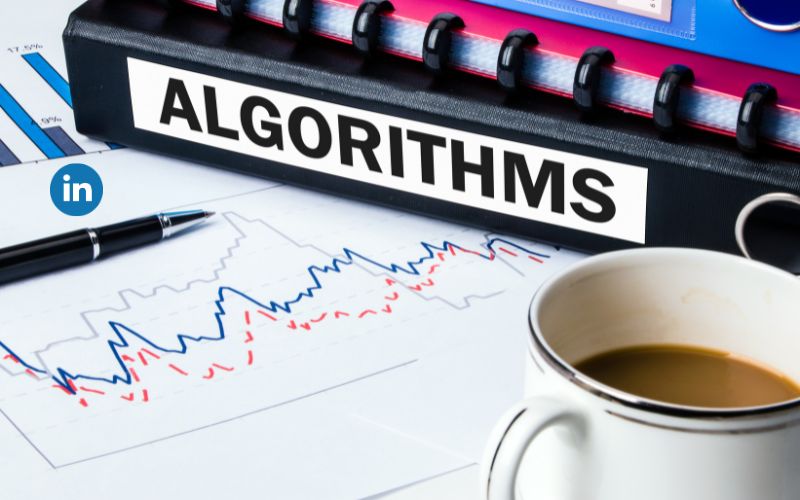
In 2025, LinkedIn rolled out a significant algorithm update aimed at prioritizing B2B engagement and promoting meaningful professional interactions. As the platform continues to grow as a hub for business networking, lead generation, and content marketing, this update brings new opportunities and challenges for B2B marketers.
In this blog, we’ll explore the key changes, their impact on content visibility, and how businesses can adapt their LinkedIn strategies to maximize engagement.
Key Changes in LinkedIn’s Algorithm Update
A. Prioritizing Expert-Led and Niche Content
LinkedIn’s new algorithm favors industry-specific, expert-driven content over general or broad posts. This change aims to surface valuable, insightful content that provides actionable takeaways for professionals.
- What Changed:
- Posts from recognized industry experts and company pages receive higher visibility.
- Niche topics with detailed insights are prioritized in the feed.
- Generic or overly promotional content is downgraded.
- Impact:
- Thought leadership content will gain more traction.
- Surface-level or sales-heavy posts will see reduced reach.
B. Boosting Content from B2B Decision-Makers
LinkedIn’s algorithm now prioritizes content from B2B decision-makers, including C-level executives, managers, and senior professionals.
- What Changed:
- Posts from decision-makers gain more visibility, especially in relevant industries.
- Content that drives industry discussions is promoted.
- Impact:
- Increased visibility for company updates and professional insights.
- Greater engagement opportunities for B2B content creators.
C. Emphasis on Conversation-Driven Posts
LinkedIn’s update promotes posts that spark meaningful conversations. Posts with more comments, replies, and ongoing discussions are ranked higher.
- What Changed:
- Posts with open-ended questions, polls, or industry debates receive greater reach.
- Engagement metrics like comment length and reply chains influence visibility.
- Impact:
- Brands that encourage dialogue will see higher post performance.
- Shallow posts with limited interactions may lose visibility.
D. Improved Content Relevance through AI
LinkedIn’s AI-powered algorithm now delivers more relevant content to individual users based on their activity, interests, and industry interactions.
- What Changed:
- AI-powered recommendations suggest posts based on user behavior.
- Improved content matching for professionals in specific industries.
- Impact:
- More personalized content feeds for users.
- Higher visibility for niche B2B content.
The Impact on B2B Marketers
A. Greater Importance of Thought Leadership
With the algorithm prioritizing expert-driven content, thought leadership has become essential for visibility.
- Impact:
- Brands and individuals sharing in-depth industry insights will gain more traction.
- Shallow promotional posts will have reduced visibility.
B. Increased Value of Employee Advocacy
LinkedIn’s update gives more visibility to content shared by employees, making employee advocacy programs more effective.
- Impact:
- Content shared by employees receives a higher ranking than company page posts alone.
- Employee posts help brands reach a larger, more trusted audience.
C. Higher Emphasis on Quality Interactions
The update rewards genuine, quality interactions over passive engagements such as likes.
- Impact:
- Comments and meaningful replies significantly boost post visibility.
- Brands must focus on content that encourages active discussions.
D. Niche Content Gains More Reach
Generic or broad posts are downgraded, while niche-specific, value-driven content gains higher visibility.
- Impact:
- B2B marketers can reach more relevant audiences by focusing on specific industry insights.
- More exposure for niche content creators.
How to Optimize Your LinkedIn Strategy for the New Algorithm
A. Share Expert-Led, Insightful Content
To gain more visibility, focus on valuable, expert-driven content.
- Action Tips:
- Share case studies, research reports, and industry insights.
- Create posts offering actionable solutions to industry challenges.
- Use data-backed insights to establish authority.
B. Leverage Employee Advocacy
Encourage your employees to share and engage with company posts.
- Action Tips:
- Create a structured employee advocacy program.
- Ask employees to add their own insights when sharing company posts.
- Use employee-driven posts to amplify reach.
C. Spark Conversations with Interactive Posts
Use engagement-driven content formats to encourage meaningful interactions.
- Action Tips:
- Post open-ended questions or industry polls.
- Share controversial or opinion-based insights to drive discussions.
- Respond promptly to comments to keep the conversation going.
D. Use Industry-Specific Hashtags
LinkedIn’s new algorithm favors relevant and specific hashtags.
- Action Tips:
- Use targeted, industry-related hashtags rather than generic ones.
- Research trending hashtags in your niche.
- Include 3-5 relevant hashtags per post.
E. Focus on Quality Over Quantity
Consistent, high-quality posts will perform better than frequent, low-value content.
- Action Tips:
- Publish fewer but more insightful posts.
- Share long-form content, such as LinkedIn articles and newsletters.
- Repurpose high-performing content into different formats (e.g., carousel posts, videos).
Best Practices for B2B Marketers
- Publish Consistently: Maintain a regular posting schedule to stay visible in the feed.
- Engage with Industry Leaders: Comment on and share content from industry experts to increase visibility.
- Use LinkedIn Newsletters: Leverage LinkedIn’s newsletter feature to reach a subscribed audience with in-depth insights.
- Optimize for Mobile: Ensure content is concise and mobile-friendly, as most LinkedIn users access the platform on their phones.
- Analyze Post Performance: Use LinkedIn Analytics to identify which content types drive the most engagement.
Challenges and How to Overcome Them
A. Declining Reach for Generic Content
Promotional and generic posts receive lower visibility.
- Solution: Focus on valuable, industry-specific content with clear takeaways.
B. Increased Competition for Attention
As LinkedIn prioritizes expert-led content, smaller or less-established accounts may struggle for visibility.
- Solution: Collaborate with industry influencers or leverage employee advocacy to boost reach.
C. Need for More Engagement-Focused Strategies
LinkedIn now rewards meaningful comments and interactions over likes.
- Solution: Ask thought-provoking questions to encourage detailed responses.
Conclusion
LinkedIn’s 2025 algorithm update places a strong emphasis on B2B engagement, expert-driven content, and meaningful conversations. For B2B marketers, this means shifting focus toward thought leadership, niche insights, and employee advocacy. By creating value-driven content, encouraging interactive discussions, and leveraging employee networks, businesses can effectively navigate the new algorithm and boost their visibility and influence on LinkedIn.
